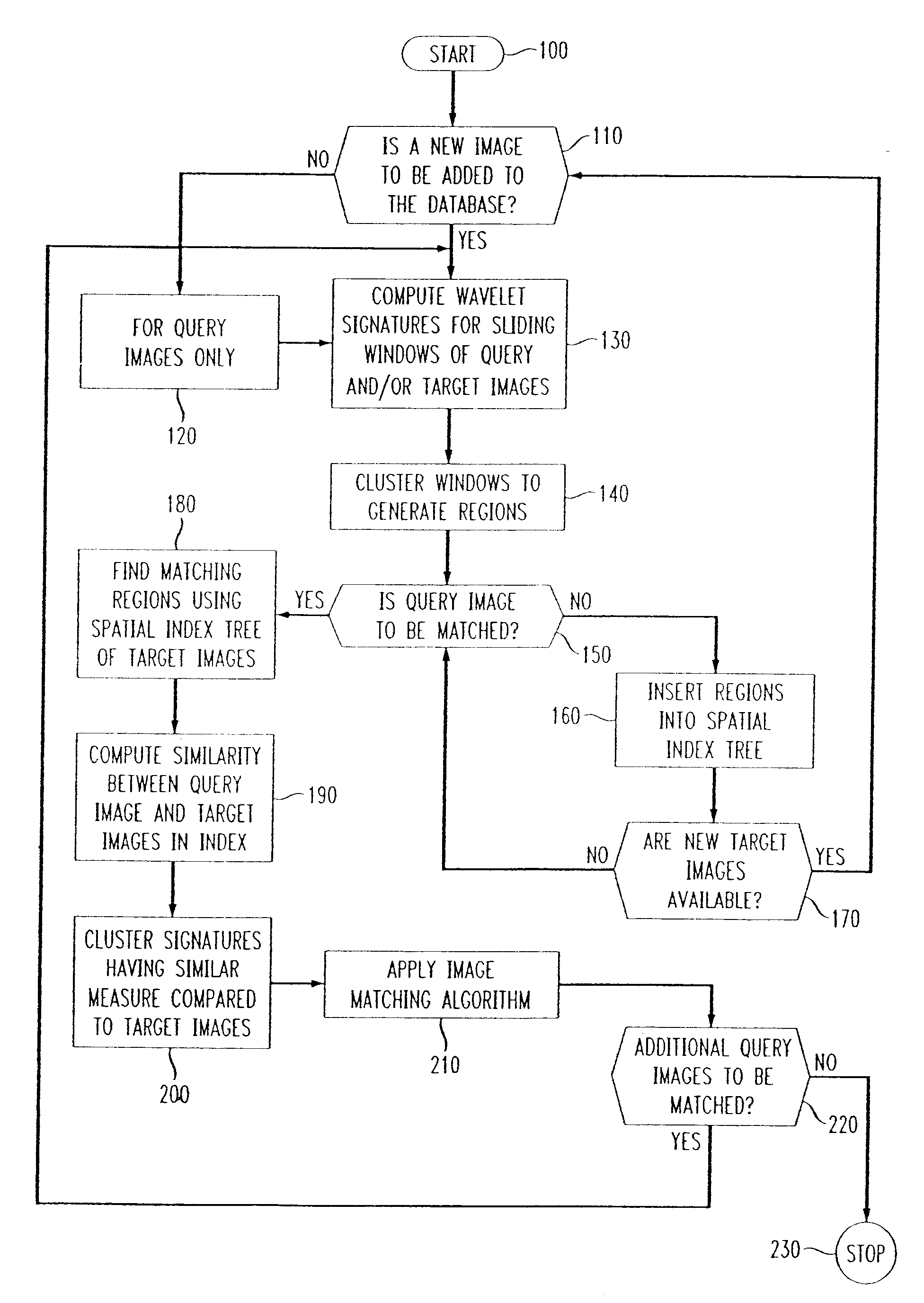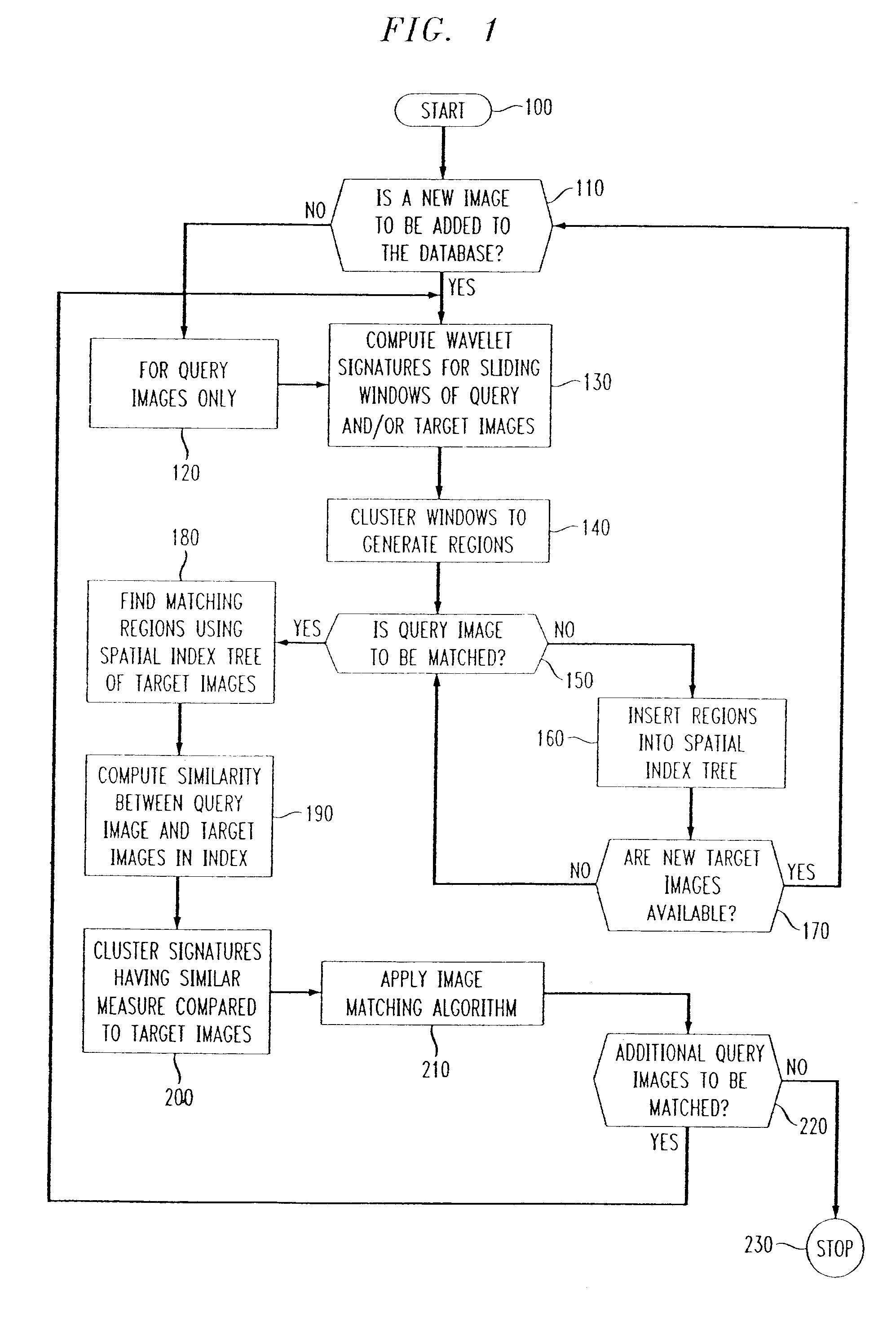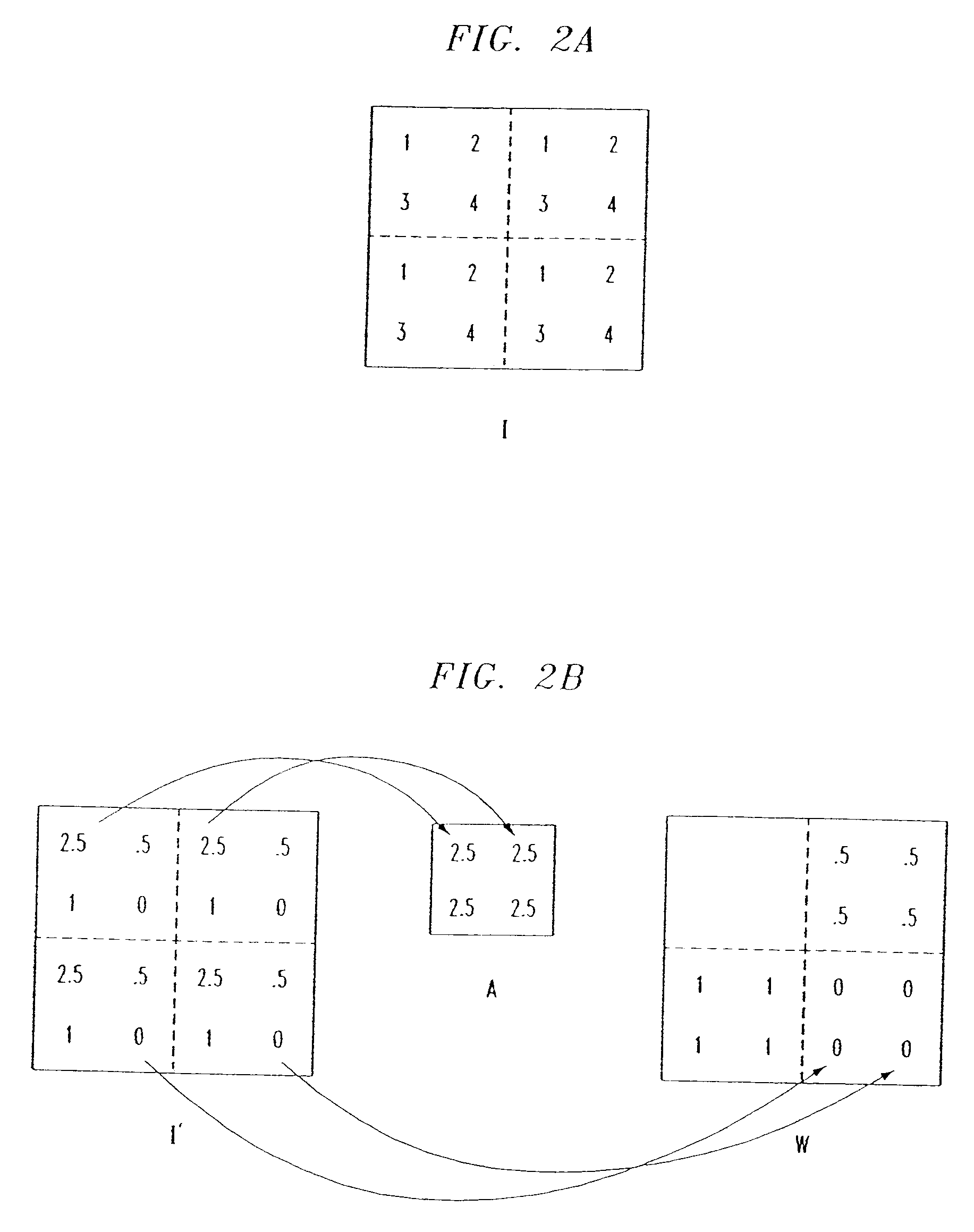Methods of imaging based on wavelet retrieval of scenes
a wavelet retrieval and scene technology, applied in the field of content-based imaging, can solve the problems of not containing any shape, location or texture information, tending to ameliorate some problems associated with prior imaging algorithms, and the above-mentioned scheme of imaging typically does not work well
- Summary
- Abstract
- Description
- Claims
- Application Information
AI Technical Summary
Benefits of technology
Problems solved by technology
Method used
Image
Examples
Embodiment Construction
The imaging methods of the present invention will typically be implemented in the form of appropriate software programs executable on a general purpose, digital computer to carry out the methods of the invention, described herein in conjunction with the exemplary flow chart shown in FIG. 1. Software programs for performing imaging in accordance with the invention and based on wavelet retrieval of scenes have been written in C++ computer code, but it will be recognized by those skilled in the art that any particular computer code, as for example Visual Basic, may also be used to program the imaging methods of the invention. The methods start at step 100 and, at step 110, it is determined whether a new database is to be populated with target images or whether new target images are to be added to the existing database. As used herein, the term "target image" denotes an image that will be stored in a database library of images and compared to query images to determine the similarity of ...
PUM
 Login to View More
Login to View More Abstract
Description
Claims
Application Information
 Login to View More
Login to View More - R&D
- Intellectual Property
- Life Sciences
- Materials
- Tech Scout
- Unparalleled Data Quality
- Higher Quality Content
- 60% Fewer Hallucinations
Browse by: Latest US Patents, China's latest patents, Technical Efficacy Thesaurus, Application Domain, Technology Topic, Popular Technical Reports.
© 2025 PatSnap. All rights reserved.Legal|Privacy policy|Modern Slavery Act Transparency Statement|Sitemap|About US| Contact US: help@patsnap.com



